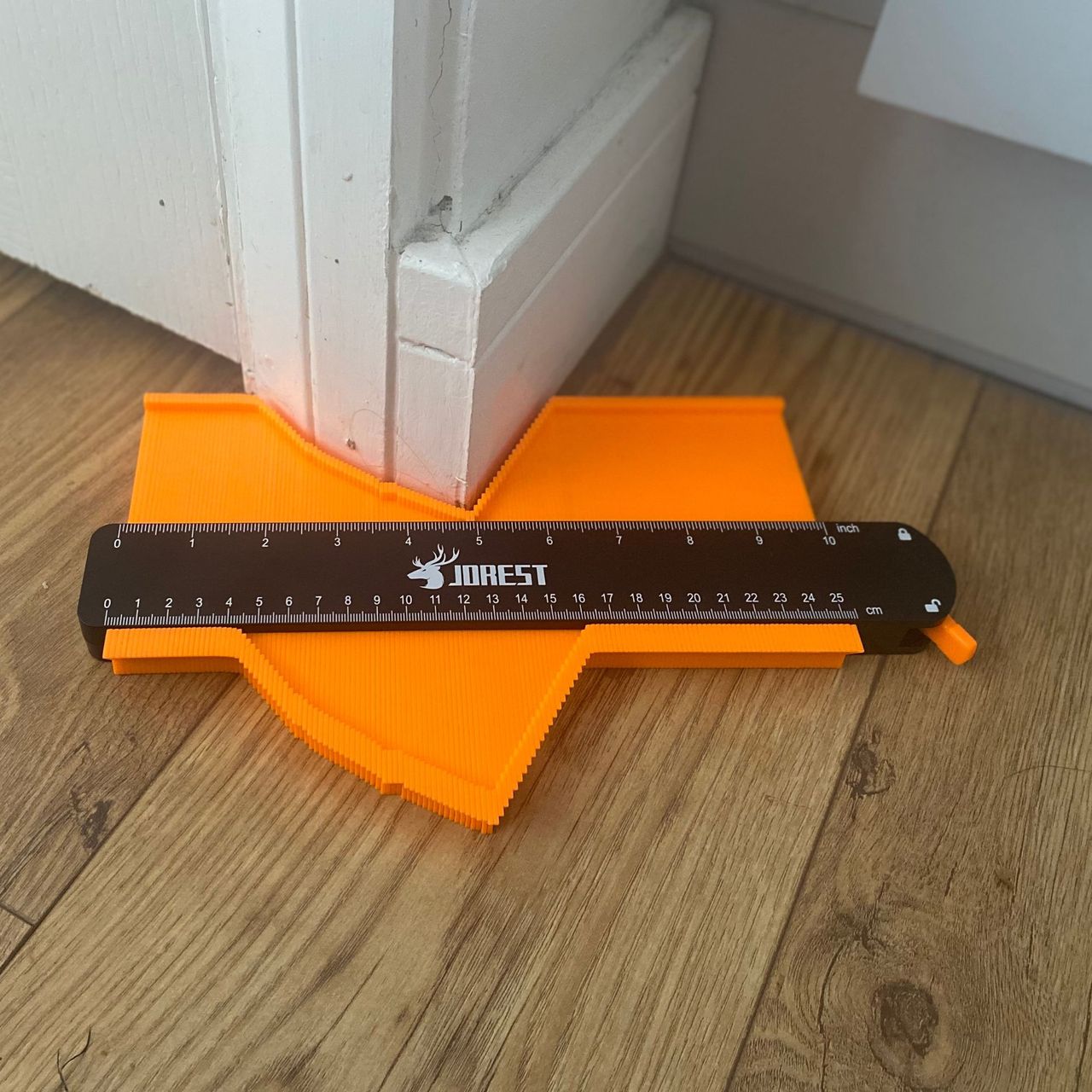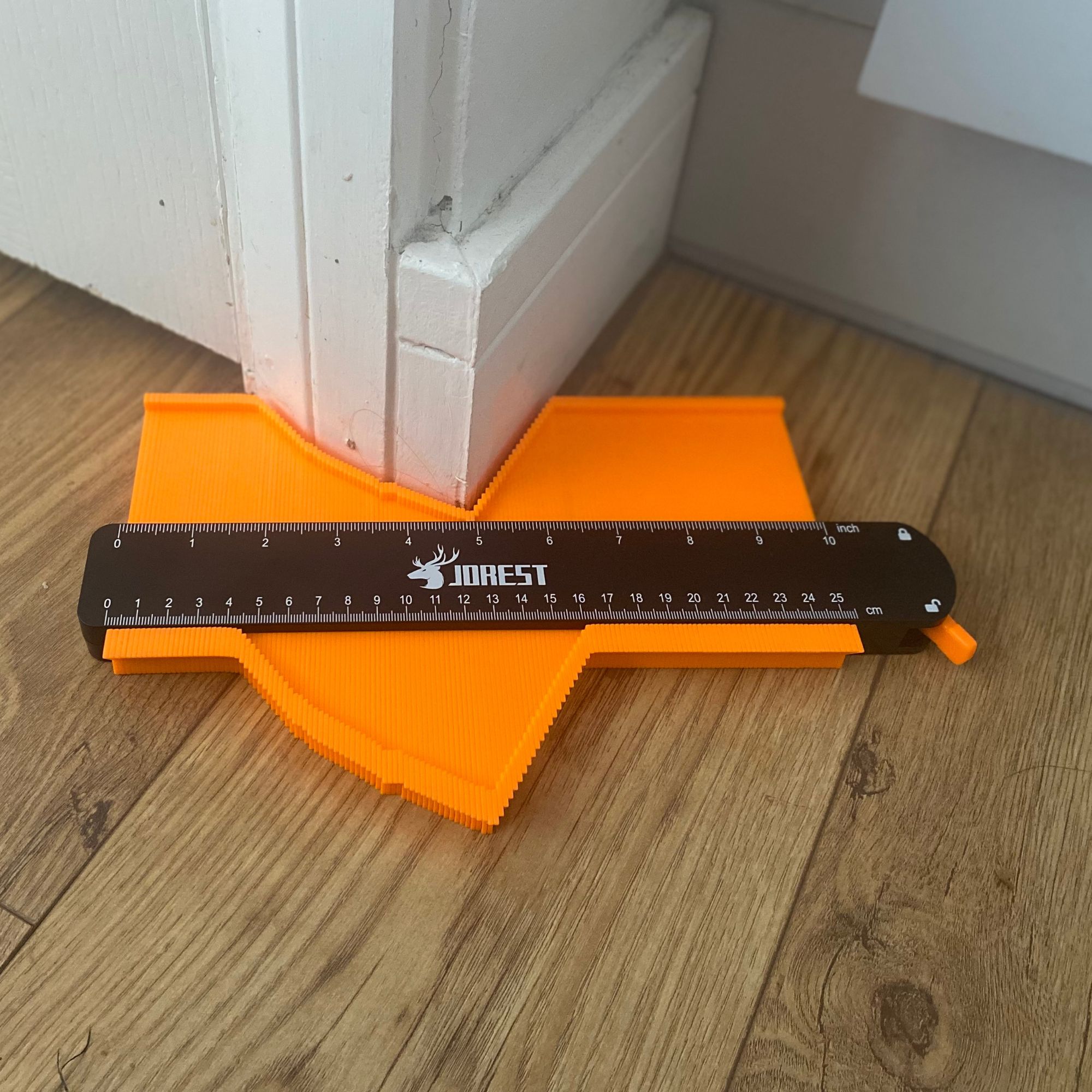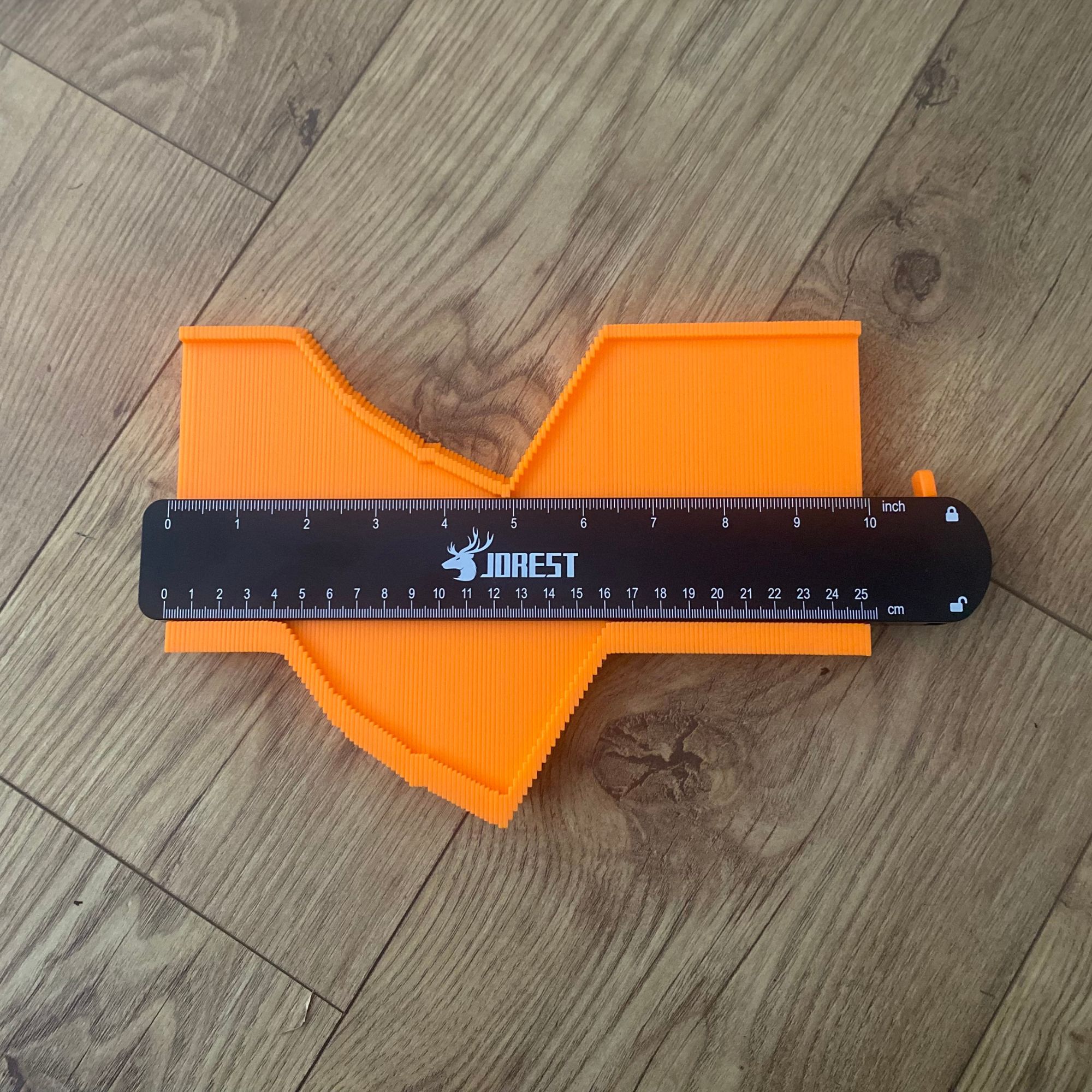
Whether you're a novice DIYer or a more experienced renovator, any tool that makes your job easier is a good idea in my book.
And I think there's one little-known tool that is worth it's weight in gold and can be bought for less than £15 - and that's a contour gauge, like this one from Amazon.
While you might have a collection of tools that all homeowners should have, if you plan on tackling some DIY, it might be time to add to your stash. Understandably, the gadgets worth adding will depend on the work you plan on doing, but sometimes not knowing which handy gadgets are available means you could struggle rather than sail through the task at hand.
A lot of people I've spoken to haven't ever heard of a contour gauge, but when I explain what it is, they all light up with the same realisation - I could do with one of those!
With moveable pins that can be locked into place, a contour gauge is an incredibly handy tool to have and costs less than £15.
How to use a contour gauge

Using a contour gauge is really simple. The tool is made of lots of moveable pins, which when pushed against an irregular surface, copy the shape of that irregular surface exactly. This then means you can easily copy that shape onto other materials to allow for a flush fit.
Here's how to use it:
- Ensure the pins are all lined up
- Press the contour gauge against the surface and the shape you want to replicate
- Lock the gauge in place so that the pins no longer move
- Carefully place the gauge on top of the material you want to replicate the shape on to, and trace using a pen or pencil and cut it out. The material should then fit flush against the awkward angle you measured.
What can you use a contour gauge for?

Where a contour gauge comes into its own, is when you are laying flooring or tiles. After all, rooms are rarely perfectly square, and it can be challenging to work around odd shapes like door frames, skirting boards or fireplaces..
A contour gauge is also incredibly useful in a bathroom, when you might be trying to lay tiles or flooring around sanitaryware.
Even if your DIY efforts only extend as far as decorating, you can use a contour gauge when applying wallpaper, to accurately cut gaps for light switches and plug sockets.
Being able to accurate trace the shape you need and ensure a professional-looking and exact fit, not only makes a project easier, but limits the likelihood of making mistakes and wasting materials, which will only add to the cost.
Depending on the material you are working with, you will need to use the correct tools to cut them to shape.
If you're cutting tiles, you'll need a tile cutter to get clean cuts. Just remember to be gentle so you don't break the rest of the tile.
A very handy gadget in any toolbox, a utility knife will help you score and cut peel and stick floor tiles neatly and accurately.
For more intricate cuts in wood, a jigsaw is a worthwhile purchase, and this one comes in at less than £40, and has more than 300 5* reviews.
In addition to a contour gauge, every homeowner should have a stud finder in order to avoid any costly errors when hanging things on walls, or when making more substantial alterations.







